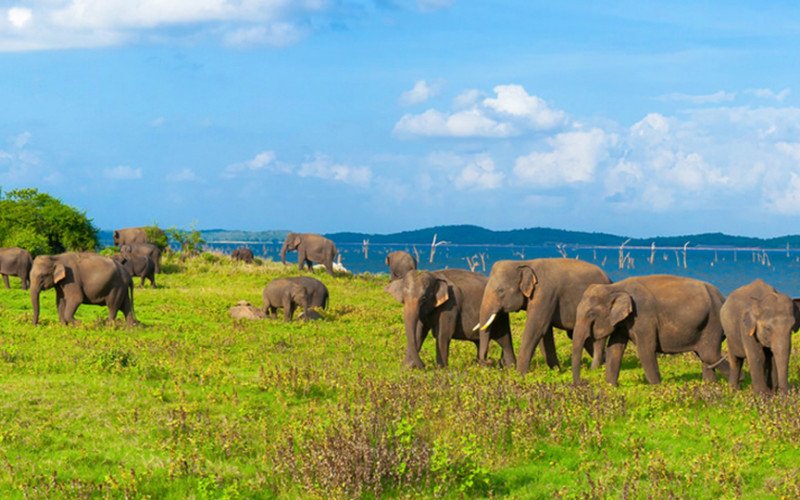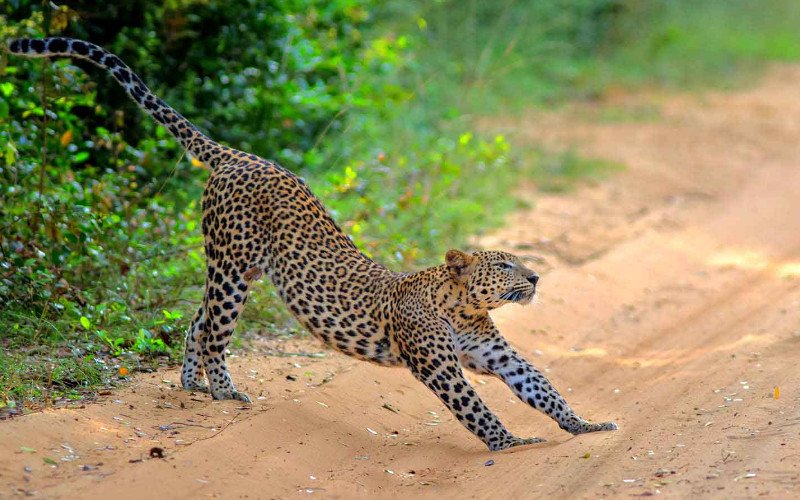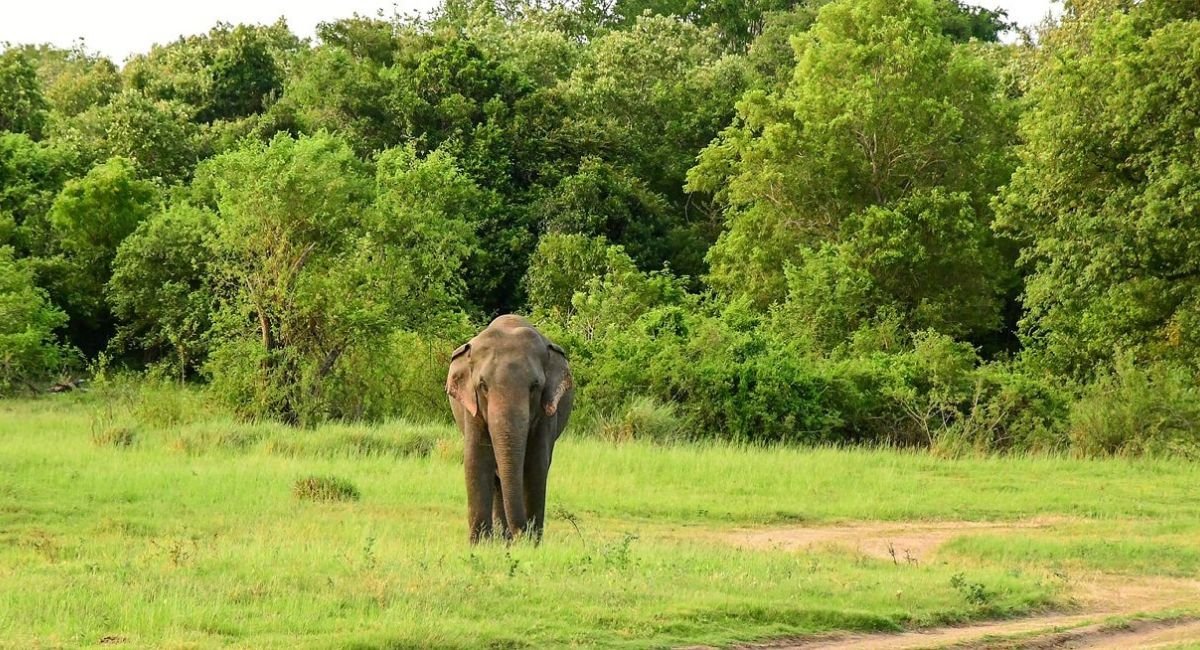Somawathiya National Park, located in the northeastern region of Sri Lanka, is a unique sanctuary that blends natural beauty with deep cultural and religious significance. This park, with its serene landscapes and rich biodiversity, is a must-visit for both nature lovers and those interested in the island’s history and spirituality.
District and Province📌
Somawathiya National Park is situated in the Polonnaruwa District, within the North Central Province of Sri Lanka. The park lies close to the ancient city of Polonnaruwa, which is renowned for its historical significance as one of Sri Lanka’s medieval capitals. This makes the park an integral part of the Cultural Triangle, attracting visitors interested in both nature and heritage.
Area Covered🗺️
The park spans approximately 3,188 hectares (31.88 square kilometers) and is a mixture of riverine ecosystems, forests, and wetlands. Its main attraction is the Somawathiya Reservoir, which provides a water source to the surrounding ecosystems and supports the park’s rich wildlife.
Significance of Somawathiya National Park💫
- Biodiversity and Ecosystem:
- Somawathiya National Park is home to a variety of wildlife species, including elephants, leopards, wild boars, sambar deer, and over 100 species of birds. The park also features a rich diversity of plant life, particularly along its riverbanks and wetlands.
- The park’s landscape includes lush forests, open plains, and the Somawathiya River, which provides essential water for the local fauna.
- Sacred and Cultural Importance:
- The park is also home to the Somawathiya Chaitya, an ancient Buddhist stupa that is considered a sacred site. It is believed that the relics of Lord Buddha are enshrined here, making it an important pilgrimage site for Buddhists in Sri Lanka.
- The stupa is associated with King Parakramabahu of the 12th century, and it remains a central element of Sri Lanka’s Buddhist heritage.
- Ecological Role:
- The park helps to maintain the health of the ecosystem by regulating water flow into the Mahaweli River, which is one of Sri Lanka’s most important rivers. It also plays a significant role in flood control and irrigation for the surrounding agricultural lands.
- Elephant Sanctuary:
- Somawathiya is part of Sri Lanka’s elephant corridor, and it is known for its resident population of elephants. The park provides a haven for these gentle giants, particularly during the dry season when they migrate to the park in search of water.
History of Somawathiya National Park🦣🦫🦎
Somawathiya National Park was established in 1990 primarily to protect the Somawathiya Reservoir and its surrounding ecosystems. The park is also historically significant because of its association with the Somawathiya Stupa, which dates back to the 3rd century BCE, though it was expanded during the reign of King Parakramabahu I in the 12th century. The region’s historical importance, combined with its natural beauty, made the establishment of the park a key effort in preserving both its cultural and environmental heritage.
Best Time to Visit Somawathiya National Park🕰️
The ideal time to visit Somawathiya National Park is during the dry season, which runs from April to September. During this period, the weather is more favorable for wildlife viewing, particularly for elephants that come to the park in large numbers. The cooler months of October to March can be wet, especially during the northeast monsoon, which might make travel difficult and affect wildlife visibility.
How to Reach Somawathiya National Park🗺️
- By Air:
- The nearest international airport is Bandaranaike International Airport in Colombo, approximately 230 kilometers away. From the airport, visitors can take a domestic flight to Trincomalee or Polonnaruwa, or opt for a road journey.
- By Road:
- The park is easily accessible by road from Colombo (approximately 5–6 hours drive) via the A6 highway. From Polonnaruwa, it is about a 1.5-hour drive to the park.
- By Public Transport:
- Buses from Colombo or Polonnaruwa can be taken to nearby towns like Maha Oya or Kaduruwela, from where local transport (tuk-tuks or private vehicles) can be hired to reach the park.
- Local Access:
- The Somawathiya Stupa is a key entry point into the park, and visitors can hire local vehicles to take them to the stupa and the surrounding wildlife areas.
Travel Activities🐾📷🐘🦅
- Wildlife Safaris:🐘🦎🦅
- Guided jeep safaris are available within the park, where visitors can spot elephants, leopards, water buffaloes, wild boars, and a variety of bird species. Safaris provide an excellent opportunity to explore the park’s diverse habitats.
- Bird Watching:🦅🐓
- Somawathiya National Park is home to many species of migratory and resident birds, including waterfowl and raptors. Birdwatchers can enjoy spotting species such as painted storks, herons, and kingfishers.
- Cultural Exploration:⛪🛕
- Visit the Somawathiya Stupa and explore the surrounding archaeological sites. These sites are significant to Sri Lanka’s Buddhist history, offering a cultural and spiritual experience alongside natural exploration.
- Photography:🎥📷
- The park’s scenic landscapes, with the Somawathiya Reservoir, forested areas, and elephants, provide numerous opportunities for photography. The early mornings and late afternoons offer the best light for capturing the park’s wildlife and landscapes.
- Nature Walks and Trekking:🚶♂️🚶♀️
- For those interested in a more immersive experience, nature walks and treks through the park’s forests and wetlands allow visitors to explore the park’s flora and fauna up close.
Conservation Challenges and Efforts🐾
Somawathiya National Park faces several conservation challenges, including:
- Human-Wildlife Conflict:
- As the park is located near agricultural areas, there are occasional conflicts between wildlife, especially elephants, and local communities. Conservation efforts focus on reducing these conflicts through habitat management and the creation of safe corridors for elephant migration.
- Poaching and Illegal Activities:
- Poaching and illegal logging are ongoing challenges, though efforts are being made to strengthen park security and enforcement against these activities.
- Climate Change and Habitat Degradation:
Climate change may impact water levels in the Somawathiya Reservoir and the overall health of the ecosystem. Efforts are underway to monitor and adapt to these changes through ecological restoration programs.
Conclusion🦣🦜🦋
Somawathiya National Park offers a unique blend of natural beauty, rich biodiversity, and historical significance. It is a place where wildlife and culture coexist, offering a fulfilling experience for visitors interested in both nature and heritage. Whether you are an elephant enthusiast, a bird watcher, or someone keen on exploring ancient Buddhist sites, Somawathiya National Park promises an unforgettable adventure.
Visiting the park also provides an opportunity to support conservation efforts that protect the natural environment and cultural heritage of Sri Lanka.
Best Tours at Somawathiya National Park🦣🦋🦎
Discover the best tours in Sri Lanka, where every journey unveils a new wonder. Explore ancient ruins, lush tea plantations, golden beaches, and vibrant wildlife. Experience the magic of this tropical paradise like never before!





Hello my friend! I want to say that this post is amazing, nice written and include approximately all significant infos. I would like to look extra posts like this .